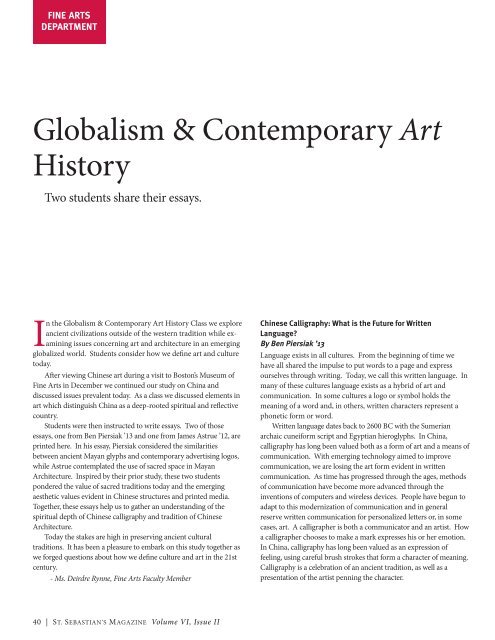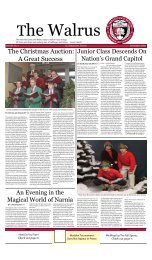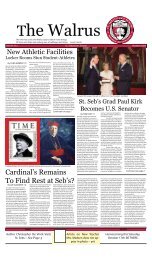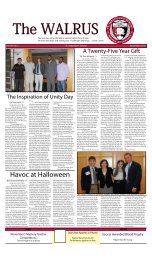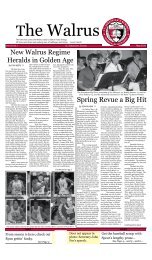ST SEBASTIAN’S
Issue II - St. Sebastian's School
Issue II - St. Sebastian's School
- No tags were found...
You also want an ePaper? Increase the reach of your titles
YUMPU automatically turns print PDFs into web optimized ePapers that Google loves.
FINE ARTS<br />
DEPARTMENT<br />
Globalism & Contemporary Art<br />
History<br />
Two students share their essays.<br />
In the Globalism & Contemporary Art History Class we explore<br />
ancient civilizations outside of the western tradition while examining<br />
issues concerning art and architecture in an emerging<br />
globalized world. Students consider how we define art and culture<br />
today.<br />
Aer viewing Chinese art during a visit to Boston’s Museum of<br />
Fine Arts in december we continued our study on China and<br />
discussed issues prevalent today. As a class we discussed elements in<br />
art which distinguish China as a deep-rooted spiritual and reflective<br />
country.<br />
Students were then instructed to write essays. Two of those<br />
essays, one from Ben Piersiak ’13 and one from James Astrue ’12, are<br />
printed here. In his essay, Piersiak considered the similarities<br />
between ancient Mayan glyphs and contemporary advertising logos,<br />
while Astrue contemplated the use of sacred space in Mayan<br />
Architecture. Inspired by their prior study, these two students<br />
pondered the value of sacred traditions today and the emerging<br />
aesthetic values evident in Chinese structures and printed media.<br />
Together, these essays help us to gather an understanding of the<br />
spiritual depth of Chinese calligraphy and tradition of Chinese<br />
Architecture.<br />
Today the stakes are high in preserving ancient cultural<br />
traditions. It has been a pleasure to embark on this study together as<br />
we forged questions about how we define culture and art in the 21st<br />
century.<br />
-Ms.DeirdreRynne,FineArtsFacultyMember<br />
Chinese Calligraphy: What is the Future for Written<br />
Language?<br />
By Ben Piersiak ’13<br />
Language exists in all cultures. From the beginning of time we<br />
have all shared the impulse to put words to a page and express<br />
ourselves through writing. Today, we call this written language. In<br />
many of these cultures language exists as a hybrid of art and<br />
communication. In some cultures a logo or symbol holds the<br />
meaning of a word and, in others, written characters represent a<br />
phonetic form or word.<br />
Written language dates back to 2600 BC with the Sumerian<br />
archaic cuneiform script and Egyptian hieroglyphs. In China,<br />
calligraphy has long been valued both as a form of art and a means of<br />
communication. With emerging technology aimed to improve<br />
communication, we are losing the art form evident in written<br />
communication. As time has progressed through the ages, methods<br />
of communication have become more advanced through the<br />
inventions of computers and wireless devices. People have begun to<br />
adapt to this modernization of communication and in general<br />
reserve written communication for personalized letters or, in some<br />
cases, art. A calligrapher is both a communicator and an artist. How<br />
a calligrapher chooses to make a mark expresses his or her emotion.<br />
In China, calligraphy has long been valued as an expression of<br />
feeling, using careful brush strokes that form a character of meaning.<br />
Calligraphy is a celebration of an ancient tradition, as well as a<br />
presentation of the artist penning the character.<br />
40 | <strong>ST</strong>. SEBA<strong>ST</strong>IAN’S MAGAZINE Volume VI, Issue II


